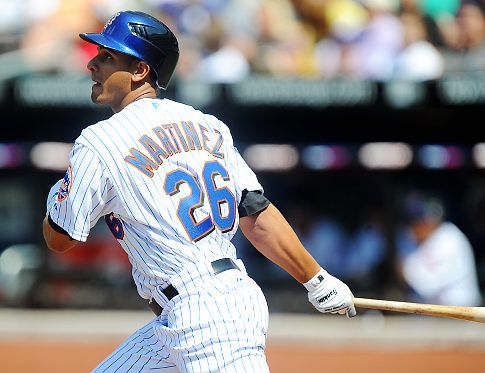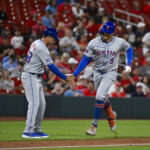It’s that time of year when prospects can find their names on the same jerseys being issued to major league players. Spring Training makes everyone look like a big leaguer, as seasoned veterans and bubble-gum chewing minor leaguers meet under the Florida sun.
It’s also that time on the calendar when prospect lists are plentiful. Perhaps the most talked about list being from Baseball America, who recently released their 2015 version of a Top 100 prospect countdown.
The dream of every prospect realized when their name is no longer printed on a list with 99 other names, but one with 24 fellow major leaguers.
Of course, which prospects make it to the Mets versus those who stay toiling in Savannah, Binghamton, and Port St. Lucie is a guessing game. Nobody really knows who is a future star; we can only make educated guesses. That is what a prospect list does: it provides an educated guess, based on informed scouts, on players who have a chance at becoming well-paid pitchers and hitters.
On the 2015 Baseball America list, the Mets have seven names. A hopeful number for fans who have suffered through six consecutive losing seasons, when payroll has plummeted, and hope for roster improvement seems reserved for the farm system instead of free agency.
But how hopeful should Mets fans be? So what if they have seven names on the BA list; what does that even translate into in real life?
Well, let’s find out.
Looking at Baseball America’s all-time prospect list, dating back to 1990, we can identify which prospects turned into career major league players, and how good their careers turned out to be. To do this, I pulled out every Mets’ player that was listed since 1990, and to allow fair developmental time for the more recent prospects, excluded the players listed after 2010. I then matched each prospect with their career WAR value.
To provide some context, when looking at prospect rankings in terms of WAR, we can use research from the folks at The Point of Pittsburgh, who found league average WAR for five prospect tiers from the Baseball America list.
 The WAR values in the table represent the average value of prospects within their first six years of service time, important because those are the team-controlled years. For the Mets, I decided to look at their career WAR value, so players like David Wright, who have produced a lot of value beyond their first six years of service, aren’t undervalued.
The WAR values in the table represent the average value of prospects within their first six years of service time, important because those are the team-controlled years. For the Mets, I decided to look at their career WAR value, so players like David Wright, who have produced a lot of value beyond their first six years of service, aren’t undervalued.
The purpose of looking at the all-time Mets’ prospect list is not necessarily to highlight which prospects were the best Mets, but to try to set expectations for looking at current prospect lists on how much value a particular prospect may be worth, over their career, based on their prospect ranking.
Without further ado, let’s look at how the Mets’ best prospects since 1990 have fared, first breaking them down by hitter. Again, this is the average career WAR value for any Mets player who was listed on Baseball America’s top 100 prospect list dating back to 1990 (and excluding 2011-2015). Their prospect ranking for the last year they appeared on the list is used.
Now, for the pitchers.
Sample size has a lot to do with how the Mets compare to the league average, for instance, Paul Wilson is the lone top-ten ranked pitcher, but we can at least get an idea of how the various prospects have performed. Clearly, either Baseball America missed the mark, or the Mets seem to have the most trouble developing pitching prospects who are ranked outside of the top 50, with 12 such players, who, combined, have averaged a measly 1.5 career WAR value in the majors. That is largely due to the fact that five of those 12 players never made it to the pros.
Overall, the group of Mets who have found their names atop Baseball America’s rankings have had varying degrees of success, with their career trajectory, based on ranking tier, about par for league average.
Finally, for the list in its entirety.

Each prospect on this list has a different story. Injuries play a huge role in player development, as do a variety of factors, which is why it is hard to draw an overall conclusion based on a retrospective prospect list.
That being said, what this list can do is perhaps set expectations for the fans on current prospects. Just because a Mets’ player is listed on Baseball America’s top 100 list doesn’t mean they are going to have a great major league career, or a career at all. David Wright has produced 52 WAR in eleven seasons. That is more value than the combined value of 22 of the 45 players listed above.
Of course, the flip side is that Baseball America can miss on prospects who turn into star players – i.e. Jacob deGrom.
Having looked back at the Mets’ all-time prospect list, can we get an idea of what to expect from the current group of top ranked prospects? Not entirely. We know that players tend to have better careers, the higher they find their names on the prospect list. But we also know there are many exceptions. Perhaps the most telling point is that no matter where a player is listed, it is quite difficult to predict who will be the best players.
Statistics courtesy of FanGraphs.
Another original article from Metsmerized Online!

















